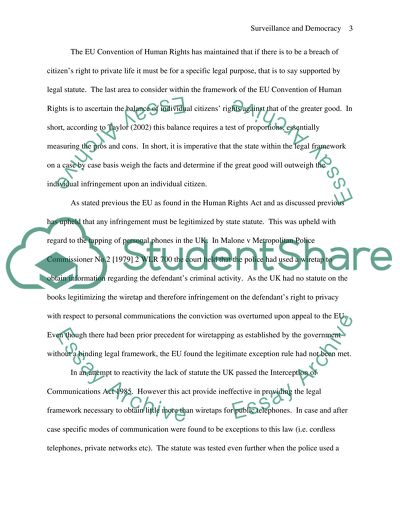Cite this document
(“Surveillance and Democracy Essay Example | Topics and Well Written Essays - 2250 words”, n.d.)
Surveillance and Democracy Essay Example | Topics and Well Written Essays - 2250 words. Retrieved from https://studentshare.org/politics/1519816-surveillance-and-democracy
Surveillance and Democracy Essay Example | Topics and Well Written Essays - 2250 words. Retrieved from https://studentshare.org/politics/1519816-surveillance-and-democracy
(Surveillance and Democracy Essay Example | Topics and Well Written Essays - 2250 Words)
Surveillance and Democracy Essay Example | Topics and Well Written Essays - 2250 Words. https://studentshare.org/politics/1519816-surveillance-and-democracy.
Surveillance and Democracy Essay Example | Topics and Well Written Essays - 2250 Words. https://studentshare.org/politics/1519816-surveillance-and-democracy.
“Surveillance and Democracy Essay Example | Topics and Well Written Essays - 2250 Words”, n.d. https://studentshare.org/politics/1519816-surveillance-and-democracy.


